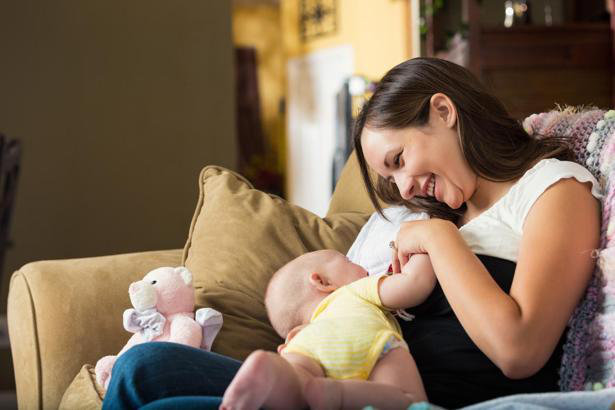Modafinil vs. Pitolisant for Narcolepsy: Should You Consider Switching?
Narcolepsy is a chronic neurological sleep disorder that causes excessive daytime sleepiness (EDS), sudden muscle weakness (cataplexy), vivid dreams, and fragmented nighttime sleep. Treatment aims to improve daytime functioning, reduce sleep attacks, and manage associated symptoms such as cataplexy.
For many years, modafinil has been the mainstay therapy for narcolepsy-related EDS. More recently, pitolisant, a first-in-class histamine-3 (H3) receptor inverse agonist, has emerged as an alternative option that may also reduce cataplexy.
Understanding Narcolepsy
Narcolepsy is divided into two main subtypes:
- Type 1 Narcolepsy: EDS with cataplexy.
- Type 2 Narcolepsy: EDS without cataplexy.
Both forms significantly impair quality of life. Effective pharmacological management is often essential to maintain wakefulness and daily functioning.
Modafinil: A Longstanding Option
Mechanism of Action
Modafinil is a non-amphetamine wakefulness-promoting agent. Its primary mechanism is weak inhibition of the dopamine transporter, leading to increased extracellular dopamine. It may also indirectly influence norepinephrine, serotonin, orexin, and histamine pathways (Greenblatt & Adams, 2023).
Clinical Effectiveness
- Demonstrated efficacy in reducing daytime sleepiness in narcolepsy (FDA, 2015).
- Does not improve cataplexy, making it less suitable for Type 1 narcolepsy (Greenblatt & Adams, 2023).
Safety Profile
- Common side effects: headache, nausea, insomnia (FDA, 2015).
- Rare but serious: Stevens-Johnson syndrome, psychiatric symptoms, cardiovascular risks (FDA, 2015).
- Classified as a Schedule IV controlled substance due to low but real abuse potential.
Pitolisant: The New Contender
Mechanism of Action
Pitolisant is a histamine-3 receptor inverse agonist, which increases histamine release in the brain. This promotes wakefulness and improves attention while also reducing cataplexy by modulating other neurotransmitters such as dopamine and norepinephrine (de Biase et al., 2021).
Clinical Effectiveness
- Reduces EDS with improvements on measures like the Epworth Sleepiness Scale (Li & Yang, 2020).
- Demonstrated significant reduction in cataplexy attacks in randomized trials (de Biase et al., 2021).
- Systematic reviews suggest pitolisant is effective but in some analyses did not achieve formal non-inferiority to modafinil (Fabara et al., 2021).
Safety Profile
- Common side effects: insomnia, headache, irritability (Li & Yang, 2020).
- Key risks: QT prolongation and CYP-mediated drug interactions, including reduced effectiveness of hormonal contraceptives (de Biase et al., 2021).
- Not classified as a controlled substance, reflecting low abuse potential (de Biase et al., 2021).
Comparative Evidence: Modafinil vs. Pitolisant
- EDS management: Both drugs are effective; meta-analyses suggest comparable benefit for daytime sleepiness (Lehert & Szoeke, 2020).
- Cataplexy: Pitolisant provides a clear advantage, reducing attack frequency and severity, while modafinil has minimal effect (Greenblatt & Adams, 2023; de Biase et al., 2021).
- Safety and tolerability: Modafinil is generally well tolerated but carries rare severe risks; pitolisant avoids stimulant scheduling but requires cardiac monitoring and interaction checks (FDA, 2015; de Biase et al., 2021).
Long-Term Use Considerations
- Modafinil: Widely used for decades; concerns include long-term stimulant-like effects, psychiatric symptoms, and dependence risk (Greenblatt & Adams, 2023).
- Pitolisant: Favorable for sustained use due to non-stimulant profile and cataplexy benefits, but requires monitoring for cardiac and drug-interaction issues (de Biase et al., 2021).
When Might a Switch Be Considered?
- Presence of cataplexy: Pitolisant may offer more complete symptom control.
- Side effects from modafinil: Headaches, insomnia, or psychiatric concerns may prompt a switch.
- Concerns about stimulant classification: Pitolisant’s non-scheduled status can be an advantage.
- Drug interactions or cardiac risk: May make pitolisant less suitable for some patients.
Conclusion
Both modafinil and pitolisant are valuable treatments for narcolepsy. Modafinil remains a trusted first-line therapy for EDS, especially in patients without cataplexy and with good tolerance. Pitolisant, however, offers a broader spectrum of benefits by addressing both EDS and cataplexy, with a non-stimulant profile that reduces abuse risk.
The decision to switch should be made with a healthcare provider, taking into account symptom type, safety profile, long-term goals, and patient preference.
References
- de Biase, S., Pellitteri, G., Gigli, G. L., & Valente, M. (2021). Evaluating pitolisant as a narcolepsy treatment option. Expert Opinion on Pharmacotherapy, 22(2), 155–162. https://doi.org/10.1080/14656566.2020.1817387
- Fabara, S. P., Ortiz, J. F., Sohail, A. A., Hidalgo, J., Altamimi, A., Tama, B., & Patel, U. K. (2021). Efficacy of pitolisant on the treatment of narcolepsy: A systematic review. Cureus, 13(7), e16095. https://doi.org/10.7759/cureus.16095
- Greenblatt, K., & Adams, N. (2023). Modafinil. In StatPearls [Internet]. StatPearls Publishing. https://www.ncbi.nlm.nih.gov/books/NBK531476/
- Lehert, P., & Szoeke, C. (2020). Comparison of modafinil and pitolisant in narcolepsy: A non-inferiority meta-analytical approach. Drugs in Context, 9, 2020-6-2. https://doi.org/10.7573/dic.2020-6-2
- Li, S., & Yang, J. (2020). Pitolisant for treating patients with narcolepsy. Expert Review of Clinical Pharmacology, 13(2), 79–84. https://doi.org/10.1080/17512433.2020.1714435
- U.S. Food and Drug Administration. (2015). PROVIGIL® (modafinil) tablets, for oral use, C-IV [Prescribing information]. U.S. Department of Health and Human Services. https://www.accessdata.fda.gov/drugsatfda_docs/label/2015/020717s037s038lbl.pdf








